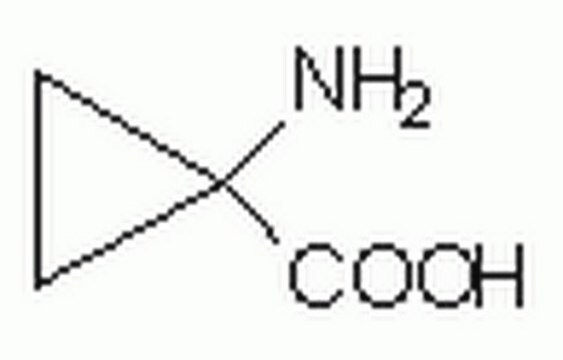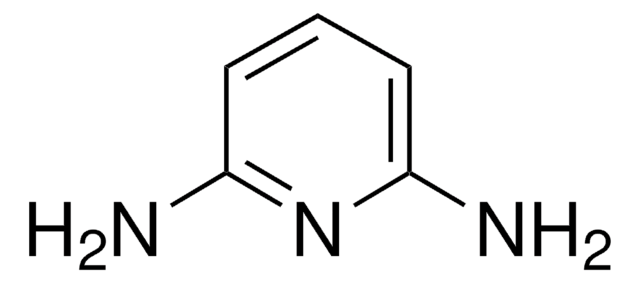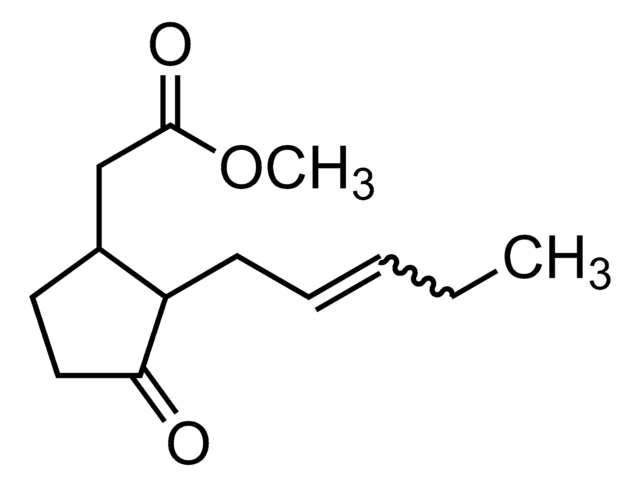A3903
1-Aminocyclopropanecarboxylic acid
≥98% (TLC), powder, NMDA agonist
Sinónimos:
ACC, ACPC
About This Item
Productos recomendados
Nombre del producto
1-Aminocyclopropanecarboxylic acid, ≥98% (TLC), powder
Quality Level
assay
≥98% (TLC)
form
powder
storage condition
(Keep container tightly closed in a dry and well-ventilated place.
Keep in a dry place.)
color
white
mp
229-231 °C (lit.)
solubility
water: 49.00-51.00 mg/mL, clear, colorless
SMILES string
NC1(CC1)C(O)=O
InChI
1S/C4H7NO2/c5-4(1-2-4)3(6)7/h1-2,5H2,(H,6,7)
InChI key
PAJPWUMXBYXFCZ-UHFFFAOYSA-N
Gene Information
human ... NARG2(79664)
mouse ... NARG2(93697)
rat ... LOC686240(686240) , NARG2(691379)
¿Está buscando productos similares? Visita Guía de comparación de productos
General description
1-Aminocyclopropanecarboxylic acid (ACC) is a non-proteinogenic amino acid and is a member of 1-aminocycloalkanecarboxylic acids.
Application
Biochem/physiol Actions
Antibody
Related product
Storage Class
11 - Combustible Solids
wgk_germany
WGK 3
flash_point_f
Not applicable
flash_point_c
Not applicable
ppe
dust mask type N95 (US), Eyeshields, Gloves
Elija entre una de las versiones más recientes:
¿Ya tiene este producto?
Encuentre la documentación para los productos que ha comprado recientemente en la Biblioteca de documentos.
Los clientes también vieron
Nuestro equipo de científicos tiene experiencia en todas las áreas de investigación: Ciencias de la vida, Ciencia de los materiales, Síntesis química, Cromatografía, Analítica y muchas otras.
Póngase en contacto con el Servicio técnico










